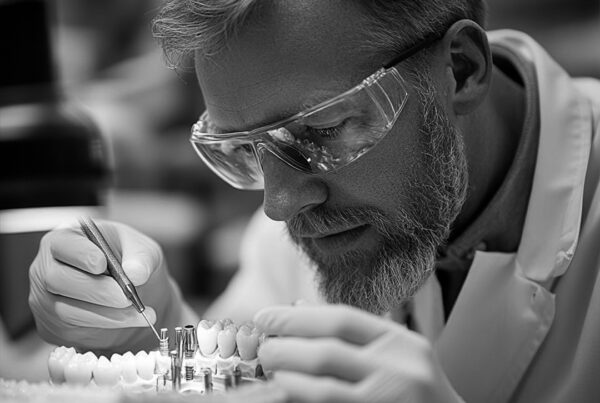
Diğer Tedavilerimiz
What is Invisalign?
Invisalign is a modern orthodontic treatment that uses clear, removable aligners to gradually straighten teeth without the need for traditional metal braces. These aligners are custom-made to fit snugly over the teeth and are designed to apply gentle pressure, gradually moving the teeth into their desired positions. Invisalign is popular for its comfort, convenience, and discreet appearance, making it an ideal option for both adults and teenagers looking for an aesthetic alternative to traditional braces.
Who is Invisalign Suitable For?
Invisalign is suitable for individuals with:
- Mild to moderate dental crowding: Overlapping or crooked teeth.
- Spacing issues: Gaps between teeth.
- Bite problems: Such as overbites, underbites, or crossbites.
- Desire for a discreet treatment: Invisalign is practically invisible, making it ideal for those who prioritize aesthetics.
How Does Invisalign Work?
- Consultation and Assessment: Your orthodontist will assess your dental health, take impressions, photos, and X-rays, and determine if Invisalign is a suitable option.
- Treatment Plan: Using 3D digital imaging, a customized treatment plan is created to map out the series of movements needed to achieve the desired result.
- Aligner Fabrication: A series of clear aligners are custom-made based on the treatment plan, with each set designed to move the teeth slightly closer to the final position.
- Wearing the Aligners: Patients typically wear each aligner set for 1-2 weeks, for 20-22 hours per day, only removing them for eating, drinking, and cleaning.
- Follow-up Visits: Regular check-ups with the orthodontist ensure the treatment is progressing as planned and to provide new sets of aligners.
- Completion and Retention: Once the desired result is achieved, the aligner treatment is complete, and retainers are recommended to maintain the new alignment.
Advantages of Invisalign
- Nearly Invisible: Made from clear material, Invisalign aligners are almost unnoticeable, offering a more aesthetic treatment option.
- Removable: Aligners can be removed for eating, brushing, and flossing, promoting better oral hygiene and dietary freedom.
- Comfortable: Unlike metal braces, aligners have no wires or brackets, which reduces the risk of irritation and discomfort.
- Customized Treatment: Each set of aligners is specifically designed for your unique dental structure and treatment goals.
Disadvantages of Invisalign
- Requires Discipline: Aligners must be worn for at least 20-22 hours daily to be effective, which may require some lifestyle adjustments.
- Not Suitable for Severe Cases: Invisalign is generally more effective for mild to moderate orthodontic issues and may not be suitable for complex cases.
- Frequent Changes: Aligners must be changed every 1-2 weeks, and frequent follow-ups with the orthodontist are needed.
- Higher Cost: Invisalign can be more expensive than traditional braces, especially for complex cases.
How to Care for Invisalign Aligners
- Clean Regularly: Rinse and brush your aligners with lukewarm water every time you remove them to prevent bacterial buildup.
- Avoid Eating or Drinking with Aligners In: Only drink water while wearing aligners to avoid staining or damaging them.
- Store Properly: Keep aligners in their case when not in use to prevent damage or loss.
- Follow Up with Your Orthodontist: Regular check-ups help monitor the treatment’s progress and ensure aligners fit properly.
Frequently Asked Questions About Invisalign Clear Aligner Treatment
- Is Invisalign painful?
Invisalign is generally less painful than traditional braces, but slight discomfort or pressure may be felt when switching to a new aligner. - How long does Invisalign treatment take?
Treatment time varies by case, typically ranging from 6 months to 18 months, depending on the complexity of the case. - Can I eat with my aligners on?
No, it’s recommended to remove aligners before eating or drinking anything other than water. - Is Invisalign suitable for everyone?
Invisalign is best suited for mild to moderate orthodontic cases. Severe cases may require traditional braces or alternative treatments. - How often do I need to see the orthodontist?
Typically, patients have follow-up visits every 6-8 weeks to monitor progress and receive new aligners. - Can teenagers use Invisalign?
Yes, Invisalign Teen is specifically designed for adolescents, featuring additional wear indicators to ensure compliance. - How do I clean my Invisalign aligners?
Rinse them with lukewarm water and gently brush with a soft toothbrush. Avoid hot water, as it can warp the plastic. - Are there any food restrictions with Invisalign?
Since aligners are removable, there are no specific dietary restrictions. Just remove them before eating. - Does Invisalign affect speech?
Some people may experience a slight lisp initially, but this usually resolves as they get used to wearing the aligners. - Is Invisalign more expensive than traditional braces?
Invisalign often costs more due to the technology and customization involved, but the price varies based on the treatment’s length and complexity.
Invisalign offers a discreet, comfortable, and effective solution for individuals seeking a more aesthetic alternative to traditional braces. With proper care and discipline, Invisalign can provide excellent results in a relatively short period.
















